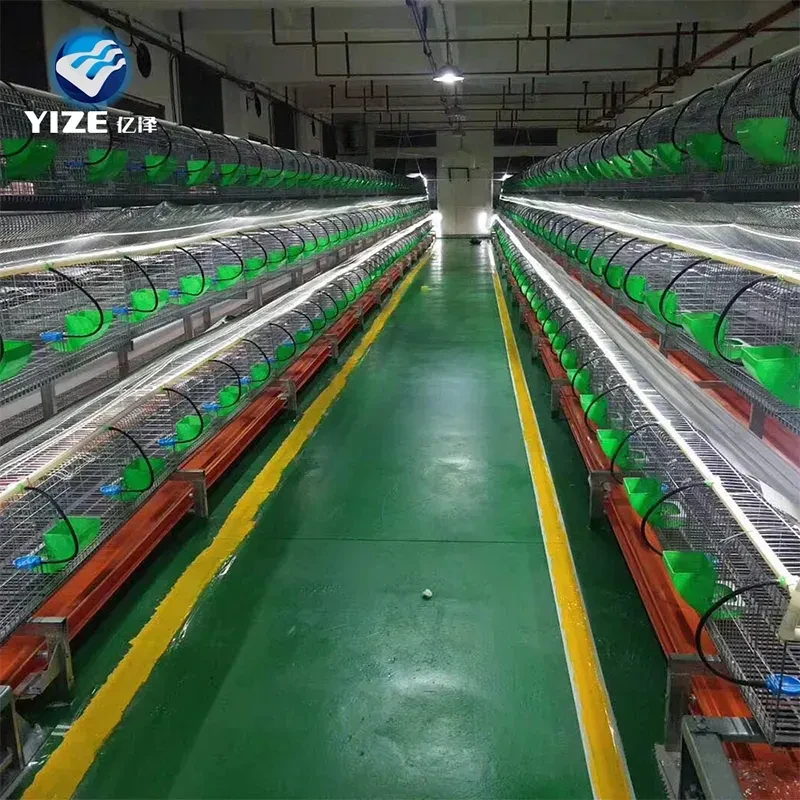Effective Chick Rearing Techniques in Cages for Optimal Growth and Health
Nov . 08, 2024 03:34 Back to list
Effective Chick Rearing Techniques in Cages for Optimal Growth and Health
The Importance of Chick Rearing Cages in Poultry Farming
Poultry farming is a cornerstone of the agricultural industry, providing a significant source of protein for millions of people around the world. Among the many aspects of poultry farming, chick rearing is a crucial phase that determines the growth and health of the birds. One of the most vital elements in chick rearing is the use of specialized cages designed to optimize the living environment for young chicks. Chick rearing cages offer numerous advantages that contribute to the overall efficiency and sustainability of poultry farming.
Firstly, chick rearing cages provide a controlled environment that is essential for the healthy development of chicks. These cages are designed to maintain optimal temperature and humidity levels, which are critical for the growth of young birds. Chicks are particularly vulnerable in their early days, as they are unable to regulate their body temperature effectively. By using chick rearing cages equipped with heating elements or ventilation systems, farmers can ensure that the chicks remain warm without the risk of overheating. This controlled environment minimizes stress, which can otherwise lead to health issues and decreased growth rates.
Furthermore, chick rearing cages help reduce the risk of disease transmission. In traditional rearing methods, chicks are often raised in open environments where they are exposed to various pathogens and parasites. Chick rearing cages create a barrier that limits exposure to harmful microorganisms. Additionally, these cages can be designed for easy cleaning and disinfection, which further reduces the likelihood of disease outbreaks. Healthy chicks not only grow faster but also have a lower mortality rate, directly benefiting the farmer's productivity and profitability.
chick rearing cage

Another significant advantage of chick rearing cages is their space efficiency. Poultry farms often face the challenge of maximizing production while minimizing costs. Chick rearing cages allow farmers to raise a larger number of chicks in a confined space without compromising their welfare. By stacking cages vertically and optimizing layout, farmers can utilize vertical space efficiently. This approach not only conserves land but also reduces the overall resource consumption associated with poultry farming. Furthermore, it enables farmers to maintain a high level of biosecurity, which is paramount in the prevention of disease.
In addition to health and efficiency, chick rearing cages also promote better feeding and watering systems. Many modern cages are designed with integrated feeding and watering systems that ensure all chicks have constant access to food and fresh water. This automation helps prevent competition among chicks for resources and ensures that each bird receives adequate nutrition. Proper nutrition is essential during the early growth stages, as it lays the foundation for future productivity in meat or egg production.
Moreover, the design of chick rearing cages often incorporates features that promote natural behaviors, such as perching and dust bathing. These enrichments not only enhance animal welfare but also contribute to the overall behavior and development of the chicks. By encouraging natural behaviors, farmers can produce healthier and more robust birds that are better equipped for their future roles, whether for meat or egg production.
In conclusion, chick rearing cages play a vital role in modern poultry farming by providing a controlled, efficient, and safe environment for young chicks. By focusing on health, space efficiency, proper nutrition, and animal welfare, these cages contribute significantly to the sustainability and productivity of poultry operations. As the global demand for poultry products continues to rise, investing in innovative chick rearing systems will be essential for meeting this demand while ensuring the health and welfare of the birds. The continued evolution and improvement of chick rearing cages will undoubtedly play a pivotal role in the future of poultry farming.
-
Automatic Feeding Line System-Pan Feeder Nipple Drinker|Anping County Yize Metal Products Co., Ltd.
NewsJul.29,2025
-
Hot Sale 24 & 18 Door Rabbit Cages - Premium Breeding Solutions
NewsJul.25,2025
-
Automatic Feeding Line System Pan Feeder Nipple Drinker - Anping County Yize Metal Products Co., Ltd.
NewsJul.21,2025
-
Automatic Feeding Line System Pan Feeder Nipple Drinker - Anping County Yize Metal Products Co., Ltd.
NewsJul.21,2025
-
Automatic Feeding Line System - Anping Yize | Precision & Nipple
NewsJul.21,2025
-
Automatic Feeding Line System - Anping Yize | Precision & Nipple
NewsJul.21,2025






